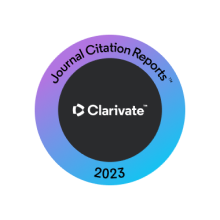Abstract
Objective: To evaluate the benefit of using three-dimensional transesophageal echocardiography (3DTEE) over conventional two-dimensional transesophageal echocardiography (2DTEE) in evaluation of various morphological features of atrial septal defect (ASD) and patent foramen ovale (PFO) during transcatheter closure. Methods: This is an observational cross sectional study including 115 patients (45 PFO and 70 ASD patients) who underwent 2D/3DTEE guided transcatheter closure from April 2019 to October 2021 in cardiology department, Tanta university hospital. Results: 70 ASD patients were divided into two groups; the pediatric age group (18 patients, mean age 9.05± 3.51 years) and the adult group (52 patients, mean age 39.3±10.15 years). ASD morphology was simple in 12.9% and complex in 87.1% of patients, where 3DTEE was superior in the evaluation of posterior, infero posterior rims, fenestrated flimsy rims, aneurysm shape, orientation, and quality of its tissue. Procedural success was defined as complete defect closure with no complications. The procedure was successful in 68 and failed in 2 patients. 45 PFO patients were divided into two groups; the pediatric age group (14 patients, mean age 13.5±3.25 years) and the adult group (31 patients, mean age 35.2±4.5 years). PFO morphology was simple in 22.2% and complex in 77.8% of patients, where 3DTEE was superior in the evaluation of the exact PFO opening from the left atrium, additional fenestrations, aneurysm shape, orientation, and quality of its tissue. The procedure was successful in all patients. Conclusion: 3DTEE guided transcatheter ASD/PFO closure provides an additional value over conventional 2DTEE in assessment of complex ASD/PFO morphology.
Recommended Citation
El Doklah, Eman H.; ElShedoudy, Sahar A.; El Saied, Ayman M.; Kassem, Hanan K.; and El Masry, Magdy M.
(2022)
"Assessment of Value of Three Dimensional Transesophageal Echocardiography versus Conventional Two Dimensional Transesophageal Echocardiography in Guiding Transcatheter Closure of Atrial Septal Defects and Patent Foramen Ovale,"
Journal of the Saudi Heart Association: Vol. 34
:
Iss.
2
, Article 5.
Available at: https://doi.org/10.37616/2212-5043.1303
Creative Commons License

This work is licensed under a Creative Commons Attribution-Noncommercial-No Derivative Works 4.0 License.




